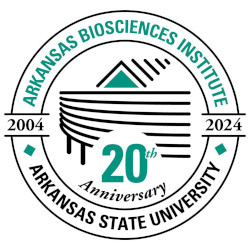Arabidopsis Gluconolactonase, the First Enzyme Involved in Ascorbate Biosynthesis Localized in the Chloroplast Protects Plants from Light Stress
Document Type
Article
Abstract
Vitamin C (L-ascorbic acid, AsA) is the most abundant water-soluble antioxidant in plants. Ascorbate scavenges free radicals, is an enzyme cofactor, and a donor and acceptor of electrons in the chloroplast. Ascorbate protects tissues against damage caused by reactive oxygen species (ROS) produced through normal metabolism or generated from stress. The inositol route to AsA involves four enzymes: myo-inositol oxygenase, glucuronate reductase, gluconolactonase (GNL), and L-gulono-1,4-lactone oxidase. The third enzyme, GNL, has been characterized in rat and bacteria but not in plants. Eighteen putative GNLs were identified in Arabidopsis, one of which, AtGNL, is interesting because it possesses a chloroplastic signal peptide. Plastids can accumulate up to 50 m M As A but until now no chloroplastic AsA biosynthetic genes have been described. This study includes the characterization of the first plant GNL enzyme in vitro and in planta. A knockout on this gene had lower foliar As A and stunted growth compared to controls. The functional gene restored the phenotype of the knockout, and those restored plants had higher AsA content, enhanced photosynthetic capacity, and higher seed yield. These results highlight the importance of AtGNL in As A formation and in maintaining a healthy redox balance in the leaves particularly under low light stress.
DOI
10.1101/2024.02.22.578673
Publication Date
2-22-2024
Recommended Citation
Yactayo-Chang, Jessica P.; Nepal, Nirman; Aboobucker, Siddique I.; Medina-Jiménez, Karina; Wilkie, Austin; Teoh, Thomas K.; Wilson, Gwendolyn A.; and Lorence, Argelia, "Arabidopsis Gluconolactonase, the First Enzyme Involved in Ascorbate Biosynthesis Localized in the Chloroplast Protects Plants from Light Stress" (2024). Arkansas Biosciences Institute. 107.
https://arch.astate.edu/abi/107



Comments
This article is a pre-print and not certified by peer-review.